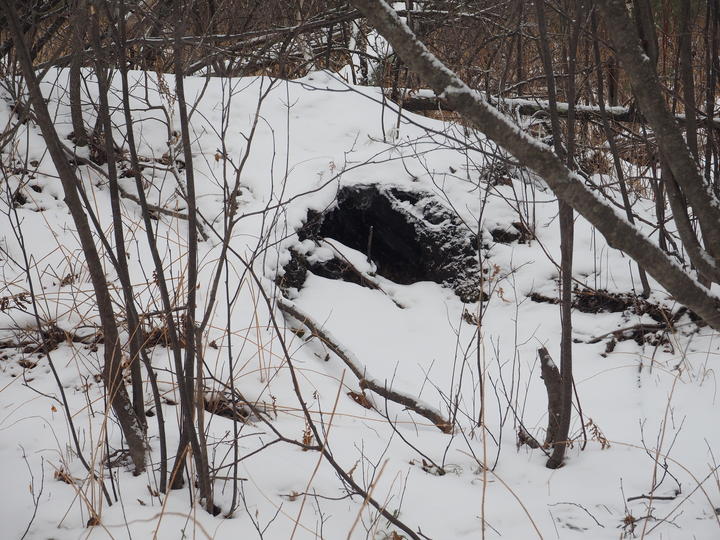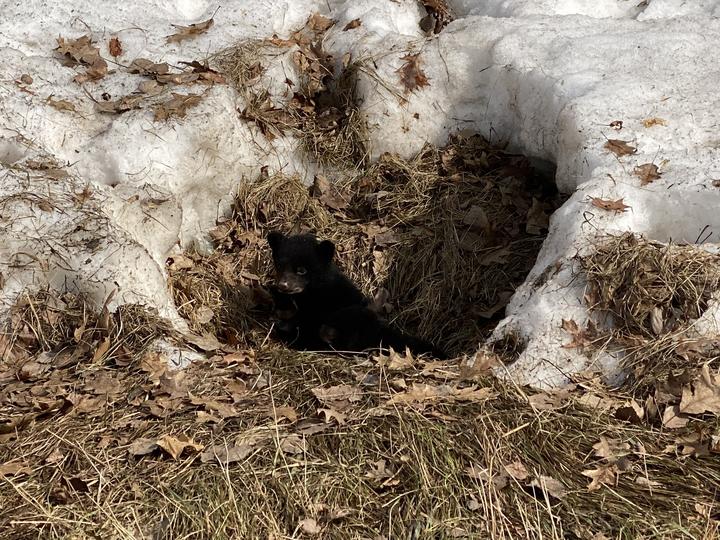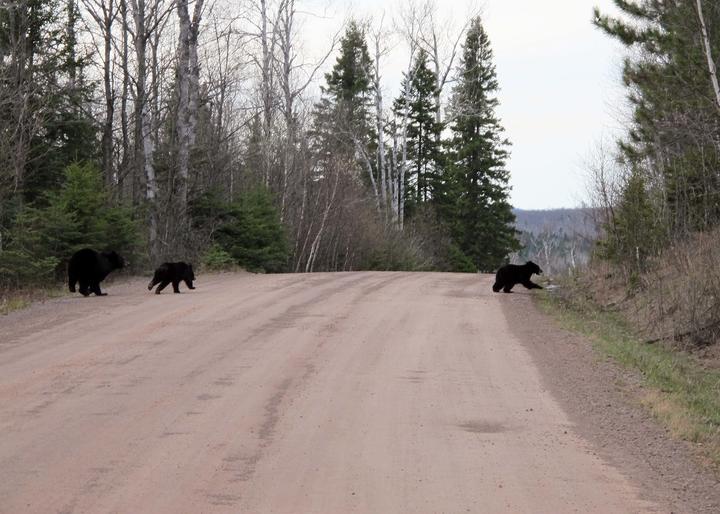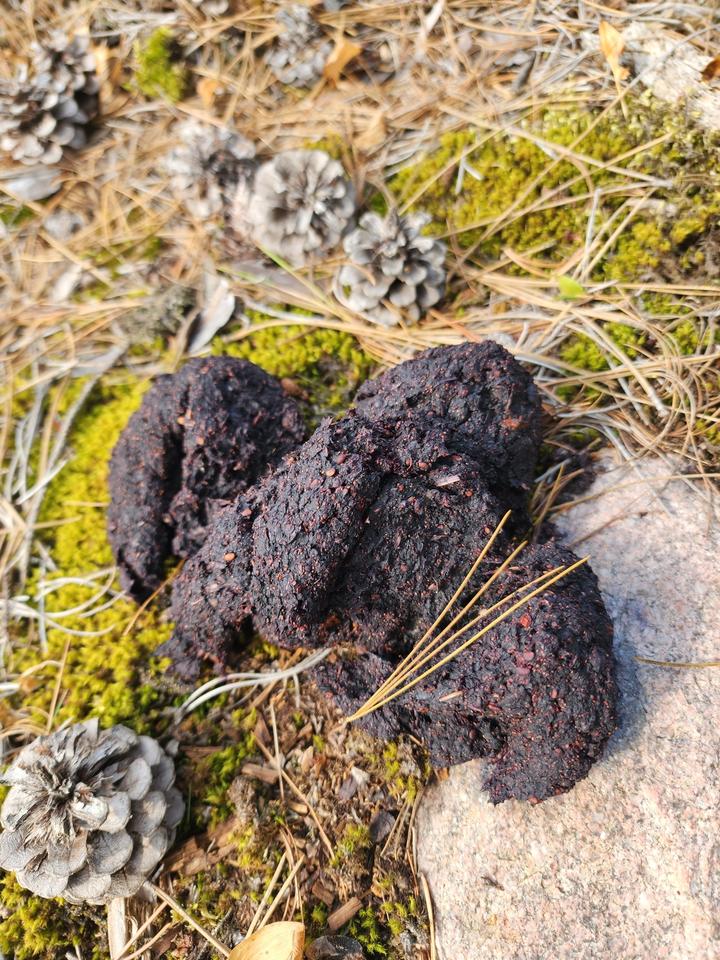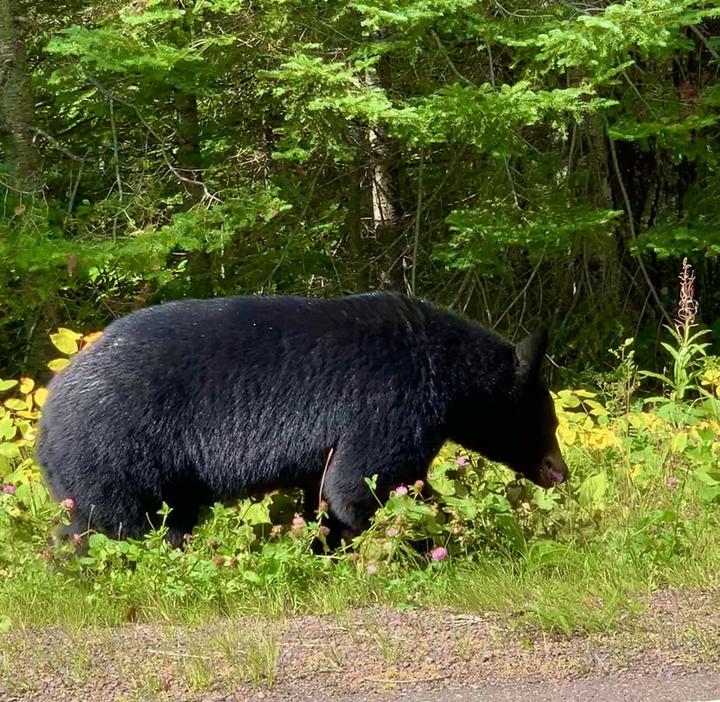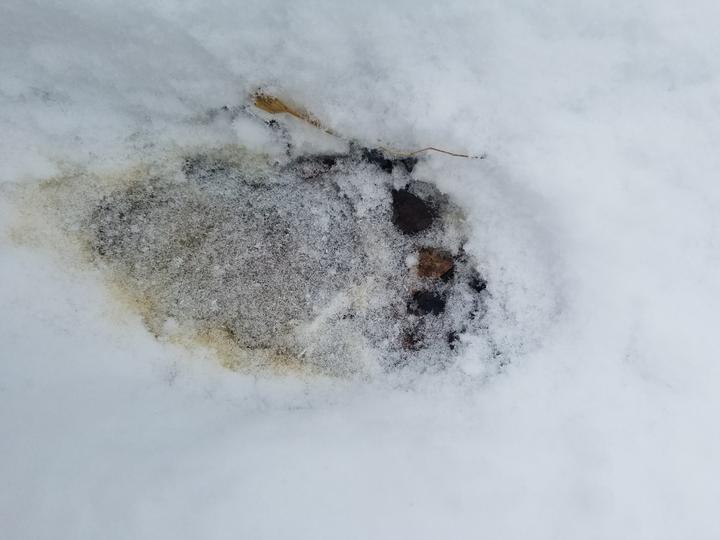More names for this animal
Anishinaabemowin: Makwa
Dakota: Maṭo (bear), Waḣaŋksiça (bear)
The Dakota and Anishinaabe were among the earliest people to name Minnesota’s plants and animals, as well as to understand them in relation to Minnesota’s climate and seasons. Those original names are still in use, and several are included on the Season Watch website.
Latin (or scientific name): Ursus americanus
The scientific community has a convention of assigning agreed-upon Latin names to every kind of organism. Using scientific names helps people communicate confidently about the same organism and organize lifeforms based on how closely related they are.
More common names: Black bear
Page content
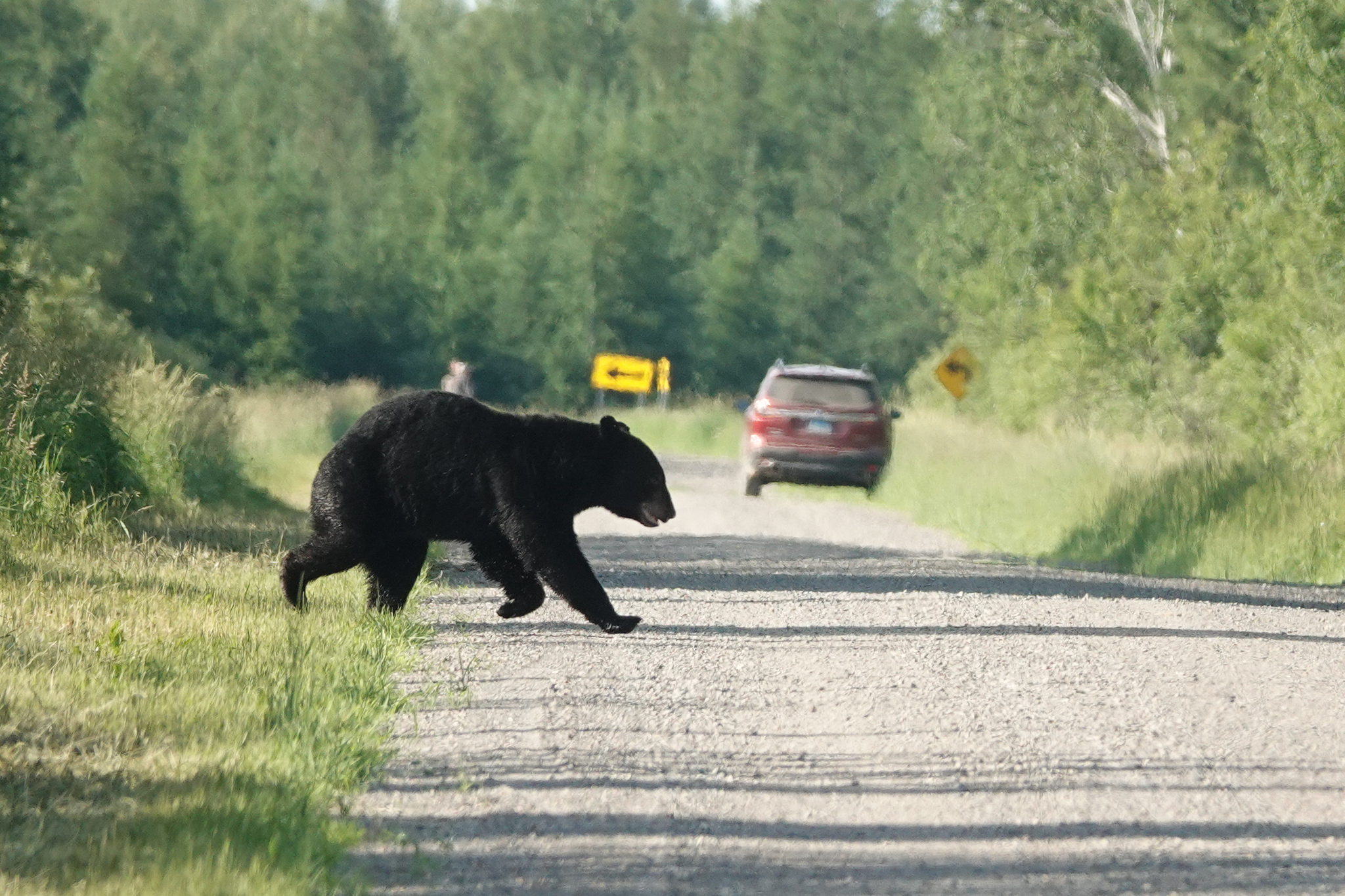
July 1, 2022, St. Louis County, Minnesota
Photo © scott_stafford, some rights reserved (CC-BY-NC)
iNaturalist observation
About the American black bear
- The black bear is a medium sized bear that weighs 200 to 500 pounds and has a lifespan of about twenty years.
- The most well-known part of black bear phenology is their winter hibernation, which can last up to six months.
- Bears mate in early summer, and their cubs are born in January to February.
- New cubs leave the den around April and will return to that den the following winter, to hibernate with their mother.
- Black bears are mostly found in the northern half of Minnesota and they eat leaves, fruits, and insects.
Visual guide to phenology
Watch for black bears' presence (or absence), abundance, and behaviors at different times of year. Also, pay attention to when young-of-year appear and develop.
Note to observers
This page explains general clues to watch and listen for when observing American black bear phenology. However, this page does not explain how to identify this animal or collect data in a standardized way.
- For help with identification, see the Minnesota DNR's webpages on mammals.
- For guidance on collecting data, see Nature’s Notebook.
More resources
Keep exploring Season Watch
Keep exploring Season Watch
Co-author: Lynsey Nass, Minnesota Master Naturalist
